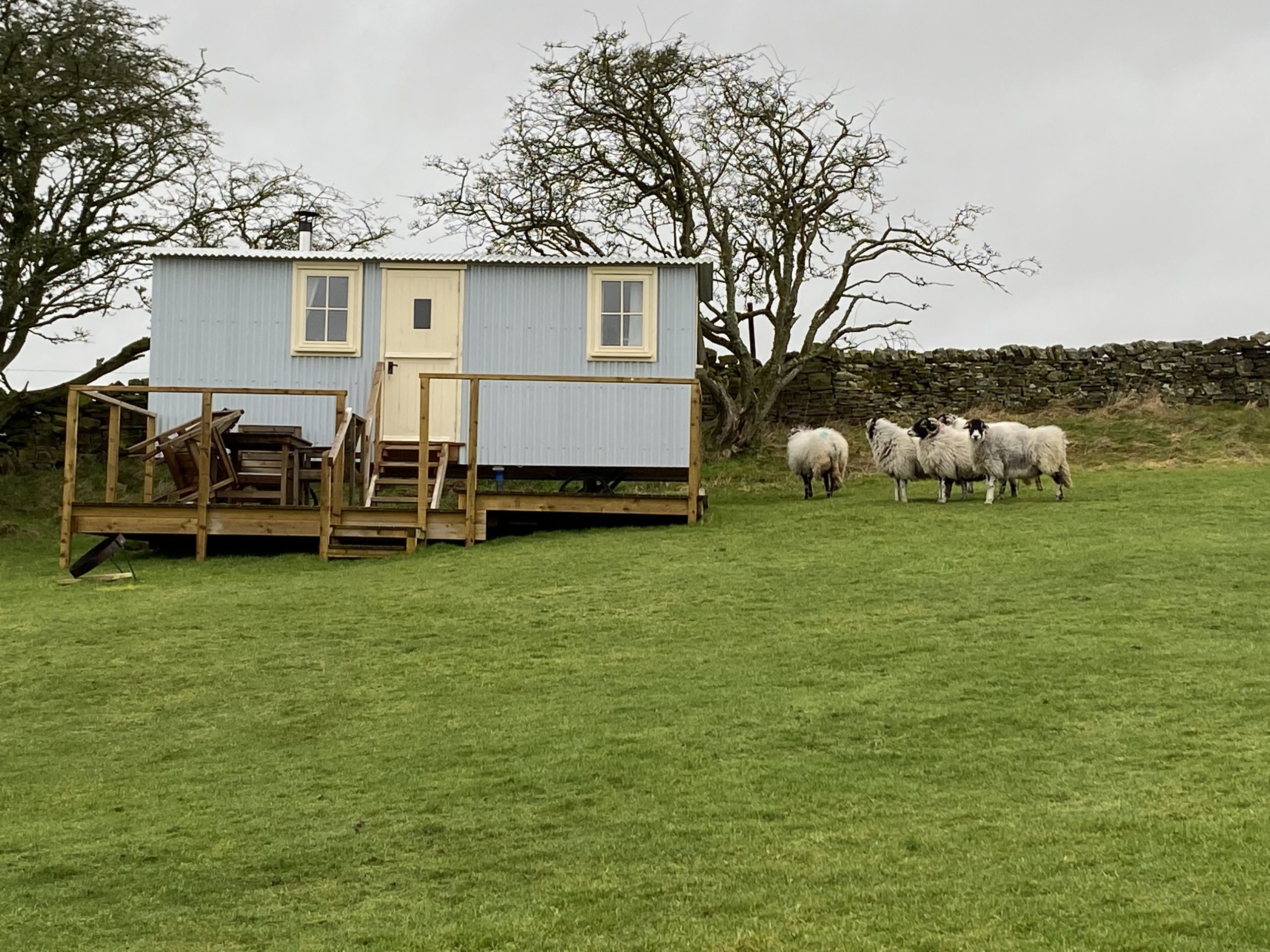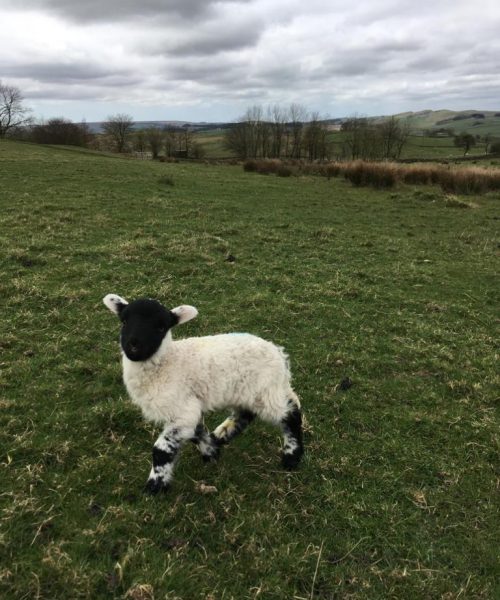- GPS Coordinates – N54.98620° / W2.42231°
The glamping units you’ll find at Hadrian’s Wall Campsite are shepherd huts. We chose these as we felt they fitted well into the Northumberland landscape. Shepherd huts will have been seen in many of the fields around us as the shepherds would use them to take shelter while looking after the sheep and during lambing.
Last week some glamping guests staying in one of our huts at Hadrians Wall Campsite were a little taken aback when they opened the curtains to find a little group of Dalesbred Ewes paying them a visit!!
These girls had managed to find their way out of a farm near us and wandered into our small campsite unnoticed! Perhaps they were looking for the shepherd. We took some photographs and sent messages to the local farms before Peter came along with his lovely collie and escorted the girls back!
Hadrian’s Wall Campsite is surrounded by beautiful high fell Northumberland landscape and the hill farms that surround us are mostly sheep and cattle. Last year a careless walker left a gate open near our campsite and we had a visit from three fell ponies – the children camping here at the time thought it was amazing!
Dalesbred sheep are well suited to both hill and lowland farms and were developed from the cross breeding of the Scottish Blackface breeds to the Swaledale breed. They have a distinctive white mark on either side of their black faces. Their legs don’t have any wool and they have a black and white mottled coat. Wool from the breed is used a lot in carpet making and they can produce up to 3 kgs of wool in a season. These girls on our campsite are heavily pregnant and we are starting to see early lambs around Hadrian’s Wall at the moment – Spring is almost here! 😊

In the first few weeks of life the lambs live solely on mothers’ milk but they soon move to grass and milk. A lamb can gain 300g of weight per day! In early summer the Ewes and lambs are sheared to ensure they are not too hot in the summer and they are also weaned from milk and onto the new growing grass. Over the summer the lambs and ewes gain weight and strength. Breeding with a ram (called tupping) takes place around October with a ram serving around 30 ewes each with the breeding taking around 6 weeks. The pregnant ewes carry their lambs, usually twins, through the winter before the cycle starts again in the spring.
It’s very sad that most lamb on supermarket shelves is from New Zealand despite Britain being able to produce sufficient to feed ourselves. New Zealand farms have higher yields, lower production costs and a better climate so it’s cheaper to the consumer here. I took the decision a long time ago to support local businesses by buying British Lamb from the local butcher. Sure it’s more expensive but we just eat it less often


This is the perfect place for your Northumberland getaway. We have the most precious thing here, being surrounded by views and nature that make us smile every day.
All we want is for you to experience it also and we know you’ll love it as much as we do.
We want your holiday to be full of happiness and special memories – full of wellbeing- and we will always do our very best to ensure that happens.
A bit of nurture in nature.
